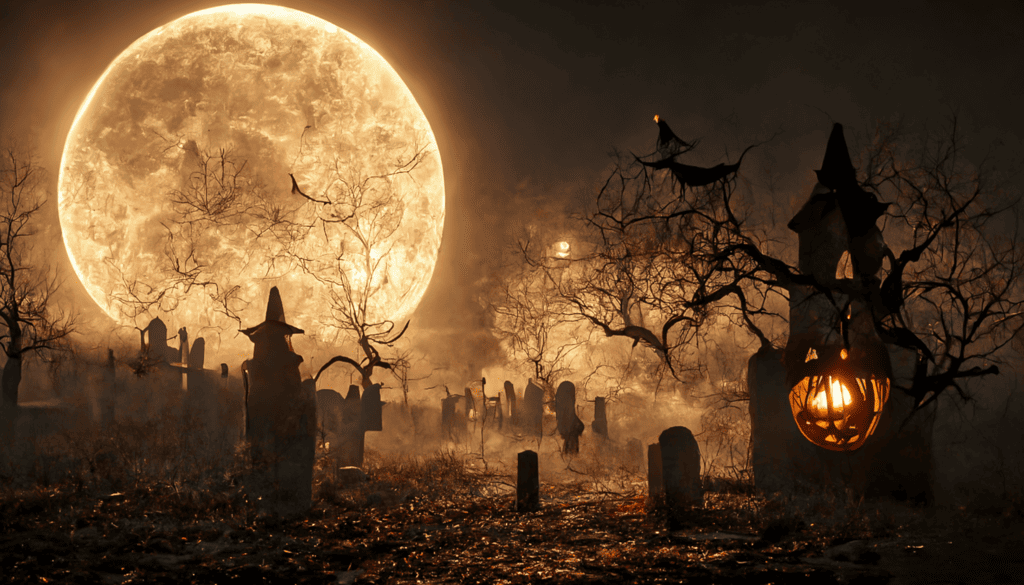The Celtic festival of Halloween, Samhain, and Celtic Traditions.
The origin of Samhain/the festival of Samhain and the origin of Halloween (in Old Irish, the end of summer).
Many sources link Halloween traditions to a “Celtic” holiday, sometimes of Anglo-Irish origin and less frequently of “Gallic” origin, celebrated nearly three millennia ago. Called Samain, or Samhain, a Gaelic word with a controversial etymology—we think of the contraction of the words “sam,” for “summer,” and “fuin,” for “end”—it is said that it marked at the same time the beginning of the year and that of the “dark” season, in opposition to the “light,” the Celts having then only two seasons. Does Halloween have its origins in Samhain?
In the first century B.C., Julius Caesar, in his Commentaries on the Gallic Wars (VI:18), stated that all the Gauls claimed to be descended from the god Dis and asserted that this tradition had been passed down by the Druids. Cernunnos, closely linked to Mercury, is born at the winter solstice and dies at the summer solstice.
Julius Caesar associated Cernunnos with the Roman Underworld god Dis, later subsumed by Pluto or Hades. For Cernunnos, see Phyllis Fray Bober Cernunnos: Origin and Transformation of a Celtic Divinity American Journal of Archaeology Vol. 55, No. 1 (Jan. 1951), pp. 13-51.
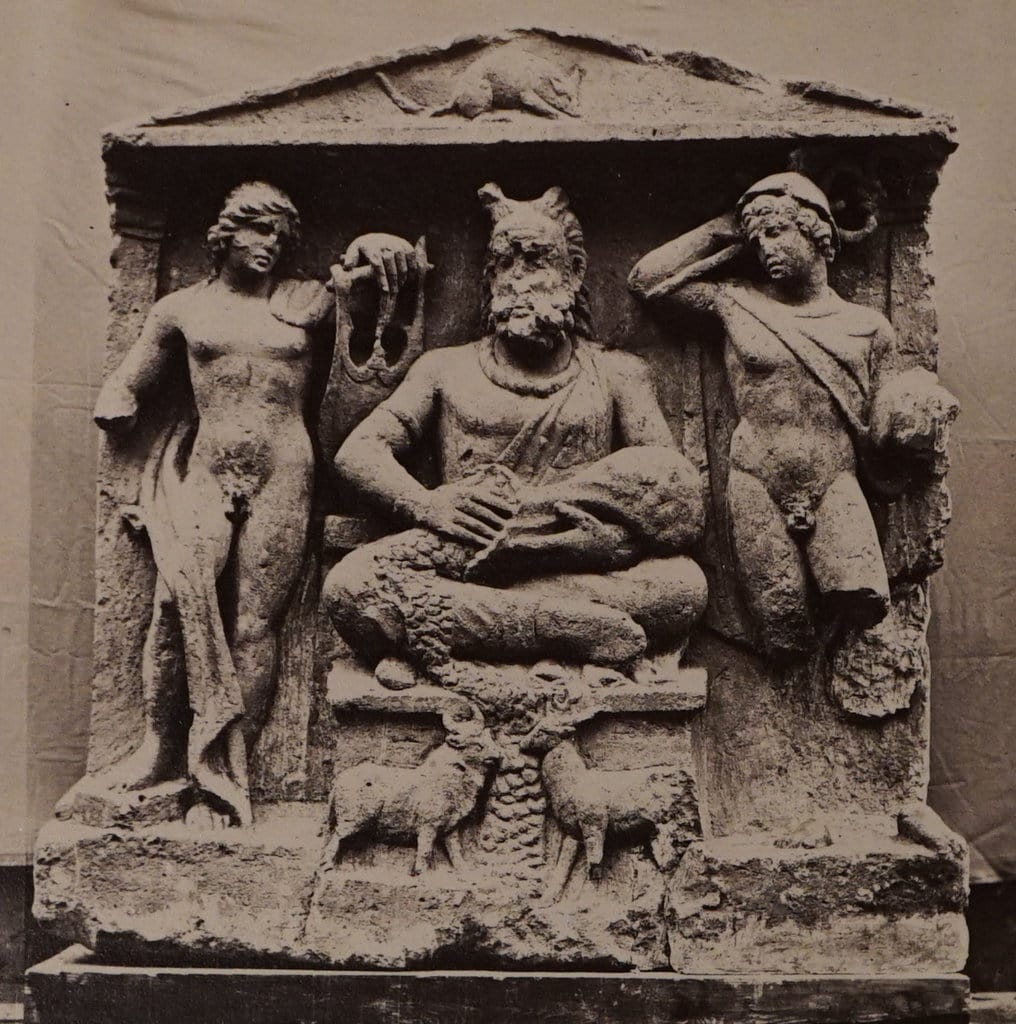
Calan Gaeaf, October 31st/November 1 is the equivalent of Samhain:
Noson Galan Gaeaf, which means ‘Winter’s Eve,’ is a Ysbrydnos or ‘Spirit Night,’ a time when spirits can roam the world of the living. Calan Gaeaf is the name for the first day of winter in Wales. In Spanish, the festival of the dead, called The Day of The Dead / Día de los Muertos, falls on November 2nd and is a celebration of the living and the dead.
The Samhain Festival, or Feis na Samhna, was celebrated on the evening of October 31st and the following day, November 1st.
The ancient Celtic festival of Samhain signified the conclusion of one pastoral year and the start of the next. It was a moment of great spirituality, as it was the only time when the “otherworld” became visible to humans, and spiritual energies were unleashed upon the physical world. This pagan celebration was adopted by Christianity as the harvest feast. The celebration became the Mass of Saint Martin (Martinmas). The event became All Hallows or All Saints Day. The evening prior was Halloween, still commemorated as the night when spirits and ghosts sought vengeance against the living and evil marched unchecked throughout the globe.
In literary traditions in all Celtic nations, fires were quenched and could only be reignited by a druid-lit ceremonial fire. See the article in issue 2 of the Templarkey Magazine, The Druids, for more information on such topics. On Samhain or its counterpart, important occurrences occurred. Are they linked with the equinox and the Winter Solstice? In mythology, during this period, the Fomorii persecuted the inhabitants of Nemed, and the Tuatha Dé Danann defeated them at the second Battle of Magh Tuireadh.
The Celtic Calendar
The oldest known Celtic calendar is represented by some brass plates unearthed at Coligny in France in 1897, dating back to the first-century B.C.E. These plates contain detailed information about how the Celts divided the year—a lunisolar calendar of 62 months with a five-year cycle—being, Samonios, Dumannios, Rivros, Anagantios, Ogronios, Cutios, Giamonios, Simivisonnios, Equos, Elembivios, Edrinios, and Cantlos are the names of the twelve regular months. Quimonios, which appeared in the first year of the five-year calendrical cycle, and Sonnocingos, which appeared in the third year, were the two intercalary months.
Giamonios relates to winter (gia-), whereas Samonios alludes to summer (samo-) (giamos). The other names’ meanings are less apparent. Summer lasted from May 1 to October 31, while winter lasted from November 1 to April 30.
A five-year cycle would have deviated from the seasons by approximately one day per year. Therefore, it was likely altered in some way. If every thirty years, an intercalary month was eliminated, the solar and calendar cycles could, thus, be brought back into alignment.
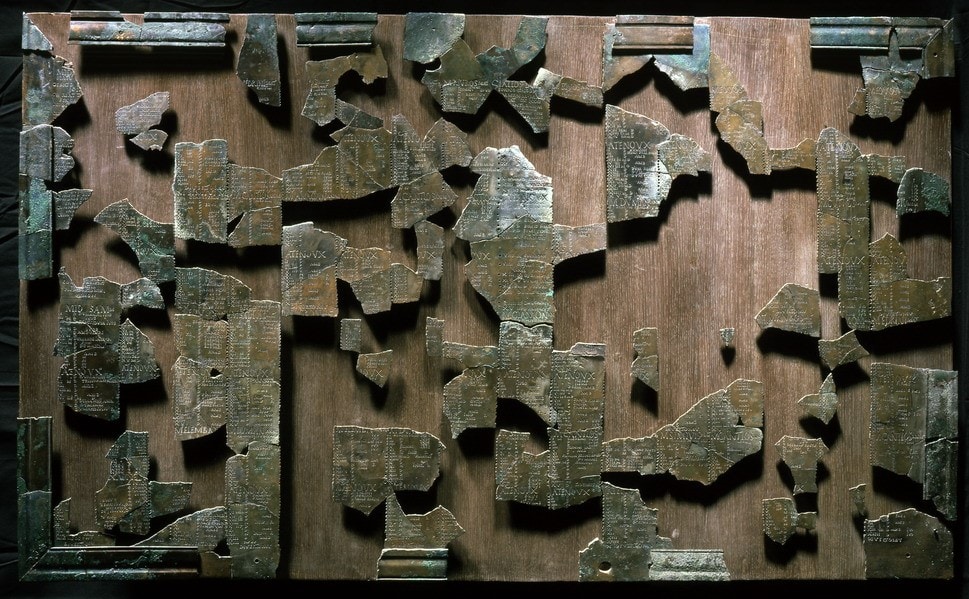
Celtic Samhain
Samhain also corresponds above all to this strange night during which the borders between the world of the living and the hereafter were exceptionally open, thus allowing comings and goings between both realms. The living could, therefore, “visit” a few hours during the world of the deceased when the dead and other fantastic beings were able to wander here below.
Many controversial bestselling authors did not hesitate to assert that the “main celebration of the Celts” was Samhain Eve, which was held from the night of October 31 to November 1. A night that belonged neither to the year that ends nor the one that begins.
Druidic and Pagan Religious Rites Marked Samhain?
Are these rites associated with Samhain? It is also said that the festivities lasted a total of seven days: Samain’s day itself – October 31 – three days before and three days after. Furthermore, they reiterated the celebration—supposedly obligatory in any society with Druidic rites—took place in a very festive atmosphere, punctuated by gargantuan banquets and a series of sacrifices. See the Templarkey Magazine issue 2 [January 2022] article on “The Druids.”
It was a real parenthesis in time, which also marked a truce in the fighting or the end of agrarian work. Finally, its disappearance is located around the 7th century, swept away by Christianity. However, it was Pope Gregory IV who would have definitively buried Samain by ordering that the “feast of all saints” be celebrated on November 1 in Christendom. The first “All Saints Day” would thus have taken place in the year 835. The Commemoration of the Dead will be set for the next day, November 2.
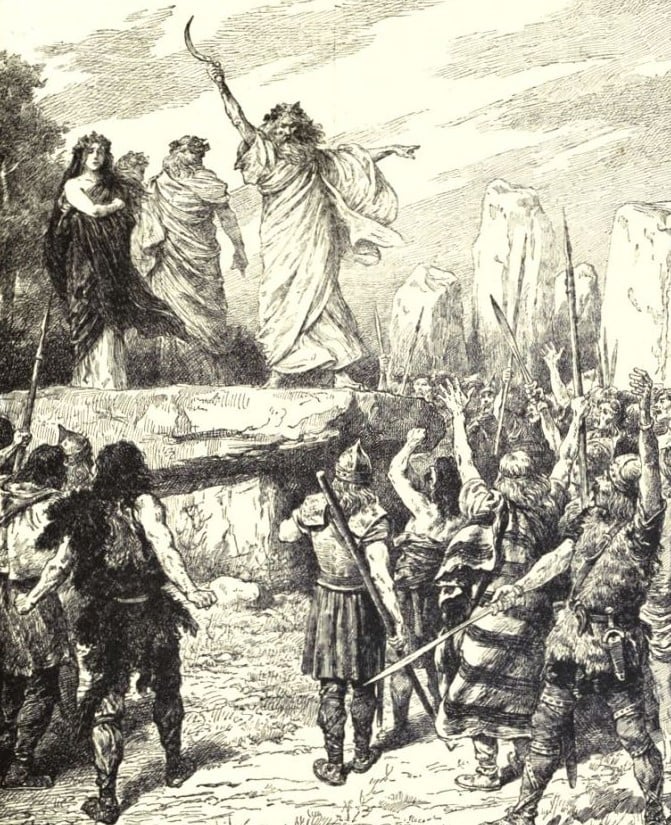
Questionable Celtic Origins (death and decay)
The Celts were supposedly among the earliest Europeans to develop a belief in the immortality of the soul. The fundamental idea was that death was merely a change of location and that life continued with all its forms and foods in another realm, a land of the dead that supplied this world with living souls. Death in this world transferred a soul to the Otherworld, and vice versa.
Philostratus of Tyana (about 1700–249) concluded that the Celts marked birth with sadness and death with celebration. They lamented birth because it signified a death in the Otherworld, whereas they rejoiced in death. After all, it signified rebirth in the Otherworld. It was believed that one night per year, the Otherworld became visible to humans. This was Samhain’s Feast (October 31/November 1).
The barriers and veils into the Otherworld were opened on this particular night, allowing its residents to exact revenge on those who had harmed them in this world. This ancient religion passed into Christianity as Halloween, the evening of All Saints’ Day (November 1), or All Hallows’ Eve. Modern Christians believe that on Halloween, witches, demons, and hellish spirits seek to capture innocent souls.
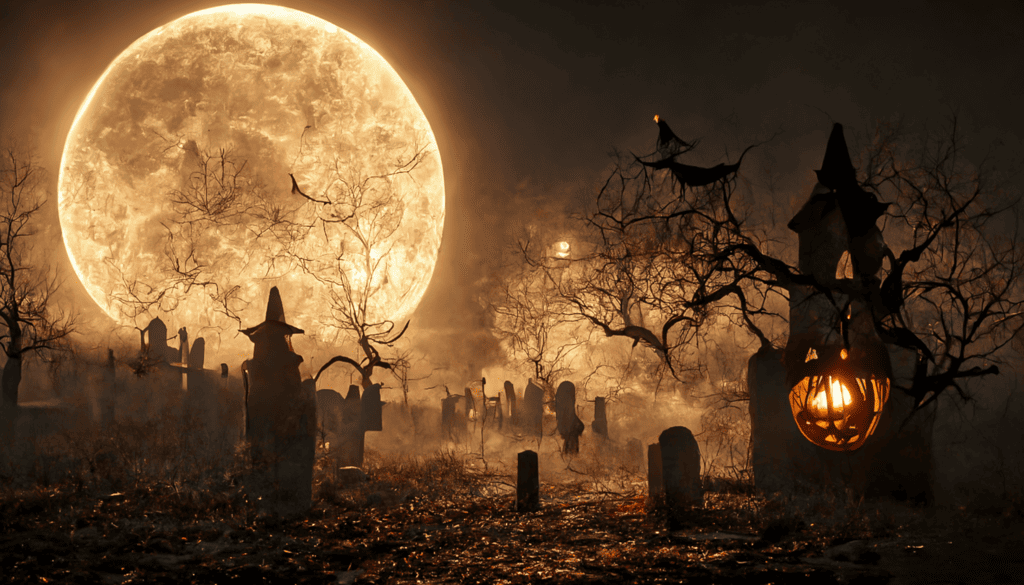
Historical Celts
As appealing as this version of the story is, it is, unfortunately, more fantasy than historical reality, at least in part. “Samain is indeed an Irish festival, but we have no source which indicates that it was a tradition present among the historical Celts, and therefore among the Gauls,” says the French expert Jean-Louis Brunaux, an archaeologist specialising in Gallic civilisation. Because the proto-Celts are indeed the Gauls, they were a people spread over a vast portion of Europe, going from the south of France to the Rhine, passing by the north of Italy, Switzerland, Austria, a part of Germany, Holland, and Belgium. “The earliest mentions of Samain, found in early Irish literature, date from the High Middle Ages at best,” the expert continues. That is a long way from the time when paganism and its magical rites dominated the old continent.
Thus, if Samain “is undoubtedly based on popular festivals which have indeed existed and date back to the dawn of time, to say that it is Celtic does not make sense.” See The Celtic Gauls: Gods, Rites, and Sanctuaries by Jean-Louis Brunaux.
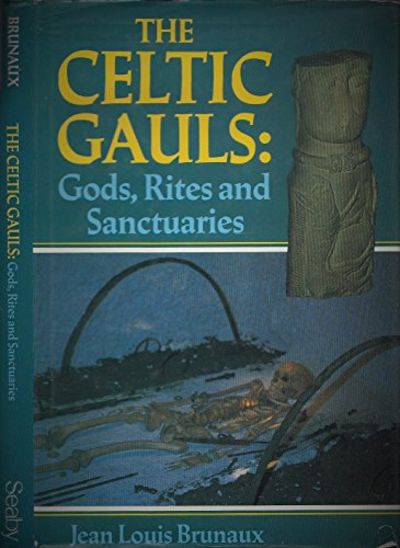
The Invention of a Tradition
So, where do these so-called Celtic origins come from? In the late 1970s, British historian Eric Hobsbawm shed new light on the history of traditions and places of memory around the world. His work leads him to assert that entire parts of history were shaped in the 17th and 18th centuries, particularly in the United Kingdom, in response to political and societal issues. Many Irish-Scottish traditions, including Samhain, are said to have been reshaped by British historians in an attempt to satisfy a need for cultural identity.
“The Irish were a neglected people, subjected to successive famines. Attributing Celtic and ancient roots to one of their folk festivals was a way of serving a national feeling” see Jean-Louis Brunaux. This Irish feast was the Christian feast of All Saint’s Eve – “The evening of all Saints’ Day,” which became, by successive contractions, “All Hallow’s Eve” and finally “Halloween.”
In the following century, the literary flights of romantic authors completed the merger of the Irish “All Hallow’s Eve” with Samhain, also spelt Samain. We owe the most effective hoax to Lady Jane Francesca Wilde, poetess and mother of Oscar Wilde, who, in her 1887 book “Ancient Legends, Mystic Charms, and Superstitions of Ireland,” depicts a night from October 31 to November 1 being full of ancestral rites.
With all due respect to Lady Jane Wilde, the best sources we have on the origins and celebration of the feast of Samain can be attributed to the Irish monks of the Middle Ages, who record—and especially Christianize—Gaelic mythology. Therefore, we learn that Samain was one of the four quarterly fire festivals and the four feasts of the year, that it marked the beginning of the dark season and the end of the light season—according to the old Celtic calendar—and that it was wanted in this transitional feast. Samhain, were its rites significant of the four quarterly fire festivals?
In Brittany, where a Celtic language is still spoken and where the ancient calendar was directly inspired by the Celtic bipartite calendar, the feast of All Saints seems intimately linked to Samhain. “In Brittany, many beliefs are close to those found in Ireland—particularly those in the existence of the Otherworld, called the Anaon. Although it is especially on the night of November 1-2, the probable influence of Christianity—let its doors open” explains Fañch Postic, ethnologist specialising in Breton and Celtic worlds and an associate member of the Breton and Celtic Research Centre (CRBC). Traces of practices similar to Irish Halloween were found in Brittany from the 17th century: A whole series of beliefs were related to the presence of the deceased that night.
As early as the 17th century, there were traces of practices comparable to Irish Halloween in Brittany. A number of beliefs were associated with the presence of the dead outside that night: it was not necessary to sweep the house for fear of driving them out, and it was also not necessary to remove the animals that could crush them. In general, it was suggested not to remain outside during the night of November 1-2 to prevent unpleasant encounters, such as the Anaon and the “Beyond Samain”, inhabited by various wonderful beings. To frighten the dead, one pleaded in song, and another set beet a drum lit by candles in front of the houses.
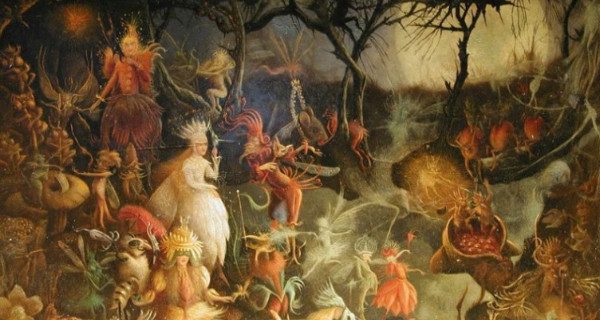
The Facts
The interpretation of Julius Caesar’s comments on Gaulish druidic timekeeping by Sir John Rhys is extensively and regularly mentioned in presentations concerning Samhain and its place in the Celtic year or progression of seasons. Samhain serves as the Celtic New Year’s celebration, according to a widely believed notion based on the proclamation above. By the eighteenth century, it was evident that the understanding of the traditional Irish year’s structure had diminished. Caesar’s Dis Pater remark does not mention winter, death, or darkness taking precedence over summer, life, or light. Those translations that employ the word ’season’ do so as an ancient synonym for ‘period of time,’ not as a connection to the climate.
Literary Currents
P.W. Joyce says in A Social History of Ancient Ireland (1903) that O’Donovan asserted in 1847 (Book of Rights 1ii) that the season with which the Pagan Irish began their year could not be ascertained. In 1855, Thomas Bulfinch released his encyclopedic work, The Age of Fable or Stories of Gods and Heroes, which included a chapter titled The Druids – Iona. In this chapter, he remarked, Iona was the home of the Druids. “Each year, the Druids observed two festivals. Beltane was celebrated at the beginning of May, while Samhain, otherwise known as the ‘fire of peace,’ was celebrated on All Hallows’ Eve”. See the Templarkey Magazine issue 2 [January 2022] article on “The Druids.” The argument that Samhain represents the beginning of the traditional (pagan) Irish calendar was not stated until 1886 when Sir John Rhys presented the Hibbert Lectures:
The populist Charles Squire wrote what he intended to be a “clear, concise, and pleasing” introduction to Celtic studies at the time, following these renowned lectures. In Celtic Myth & Legend: Poetry & Romance (1905), Squire summarized the feasts as follows: “Samhain…was also the beginning of the ancient Celtic Year,” and “gods of darkness, winter, and the Underworld” were sacrificed on Halloween.
James George Frazer’s The Golden Bough: A Study in Magic and Religion, 1922. The Fire-Festivals of Europe. Section 6. The Hallowe’en Fires. He examined the principal fire festivals of the Celts and communal bonfires, concluding that. “They were two in number and fell at an interval of six months, one being celebrated on the eve of May Day and the other on Allhallow Even or Hallowe’en, as it is now commonly called, that is, on the thirty-first of October, the day preceding All Saints’ or Allhallows’ Day. These dates coincide with none of the four great hinges on which the solar year revolves, to wit, the solstices and the equinoxes. Nor do they agree with the principal seasons of the agricultural year, the sowing in spring and the reaping in autumn.”
“Of the two feasts, Hallowe’en was perhaps of old the more important since the Celts would seem to have dated the beginning of the year from it rather than from Beltane. In ancient Ireland, as we saw, a new fire used to be kindled every year on Hallowe’en or the Eve of Samhain, and from this sacred flame, all the fires in Ireland were rekindled.”
“As a season of omens and auguries, Hallowe’en seems to have far surpassed Beltane in the imagination of the Celts; from which we may, with some probability, infer that they reckoned their year from Hallowe’en rather than Beltane. Another circumstance of great moment, which points to the same conclusion, is the association of the dead with Hallowe’en.” James George Frazer’s The Golden Bough: A Study in Magic and Religion, 1922. (Third Edition, Vol. 10 of 12).
By 1934, the idea that the Irish year should start with Samhain was almost set in stone. That same year, Henri Hubert published The Greatness and Decline of the Celts. In it, he wrote, “Samhain (1st November) marked the end of summer (Samos) and probably the beginning of the year.” Henri Hubert’s text can be easily changed to reflect the current orthodoxy, which can be found in a wide range of sources:
“There were four chief feasts. Samhain (1st November) marked…the beginning of the year. Six months later, on the 1st of May, at the beginning of summer (cèt-saman), came Beltane, the feast of the fire (tein) of Bel or Bile…At Samahin the great battle of the gods was fought at Moytura, between the Formorians and the Tuatha Dé Danann… [At the feasts] spirits were let loose and wonders…happened. In Wales the year was divided in the same way [and] in Gaul…in the Coligny calendar, we can distinguish…Samonos”
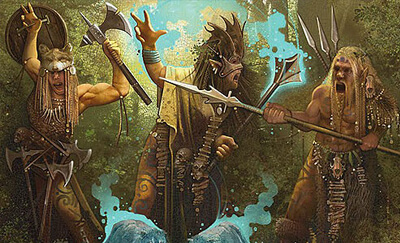
Since the 1950s, articles about the Celtic fire feasts have said that Samhain is the new year for the Celts. In his book “The Celts” from 1958, T. G. E. Powell says, “Samain was the name of the biggest festival in Ireland. The end of one year and the start of the next was marked by Samain”. Although Powell was an archaeologist and not a historian, the information in his book was, therefore, not historical.
Part of the growth of the “New Age” philosophy was based on what was learned from Celtic studies. Ross Nichols—of the Ancient Order of Druids—told his friend Gerald Gardner about the Celtic fire festivals when he found out about them in the early 1950s. At that time, Gardner was setting up the Wiccan system, and the feasts were immediately added to an eight-fold year divided by the solstices, equinoxes, and cross-quarters.
They were also added to Nichols’ breakaway Order of Bards, Ovates, and Druids. Since the idea that Samhain is the Celtic New Year has become common knowledge (see, for example, Wikipedia), it has become set in stone. But does this idea really match the traditional year? Where the Pagan practices based on actual 9th-century rites, or where they Medieval literary myths. See the Templarkey Magazine issue 2 [January 2022] article on “The Druids” and the Templarkey Magazine issue 3 [April 2022] article on “The Culdees.”
Stories of Ghosts, Ghouls, Otherworldly beings, Irish Mythology, Celtic Mythology, and the “Hand of Glory.”
Jack-o’-lantern: In Ireland and Scotland, as early as 1750, we discover remnants of well-known mythology from which the pumpkin ritual likely originated: that of Jack-o’-lantern or Jack with the lantern. Jack, a drunkard and vicious blacksmith, was never able to reach heaven due to his debaucherous lifestyle. However, after numerous escapades with the Devil during his lifetime, he was also refused access to Hell. Since his death on October 31, he has been forced to walk in the dark with only a hollowed-out turnip for illumination.
On Halloween night, it became usual after that to dig up this vegetable and place a candle inside it. When the Irish and Scottish travelled across the Atlantic to a continent where they hoped the hunger would finally end—they switched turnips for pumpkins—which were simpler to dig and more common. However, it was not until the 1930s that children in the United States began travelling from house to house at night, knocking on doors, and requesting treats.
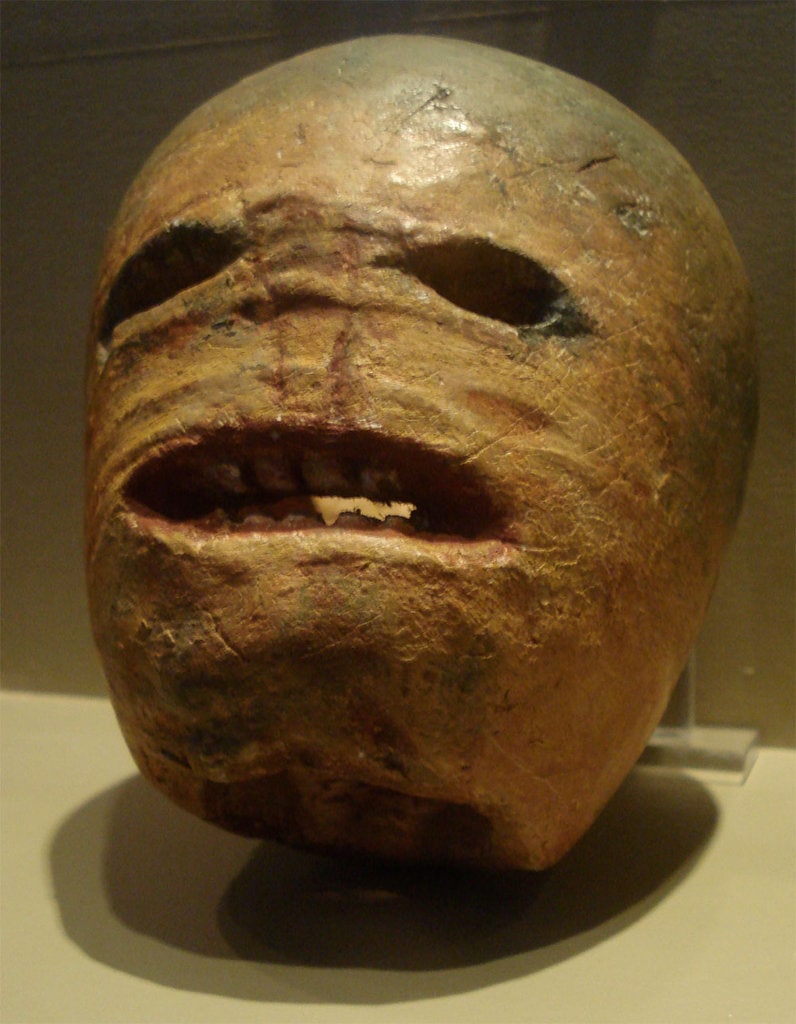
Aillén the Son of Midhna: A malignant Otherworld creature who emerged annually at Samhain from the cave of Cruach and torched the royal home at Tara after lulling the defenders to sleep with enchanted music. By placing his spear to his brow, Fionn Mac Cumhail was magically able to resist the music. Then, Fionn drove the beast away and beheaded it. In one of the variations, Amairgen is identified as the beast’s killer.
Cáer Ibormeith: In the tail of “The Dream of Aonghus,” Aonghus Óg had a dream in which he saw a beautiful woman and fell sick in love with her. He sought his mother for assistance, and she enlisted the aid of her brother, Bodb Dearg. Cáer Ibormeith, a daughter of Ethal Anubhail of the legendary Tuatha Dé Danann of Connacht, was recognised as the girl. Aonghus Óg requested the rulers of Connacht, Ailill, and Medb, to convince Ethal Anubhail to give him his daughter. However, Ethal Anubhail stated that he lacked the ability to do so since Cáer took the form of a swan and, on the Feast of Samhain, could be found swimming with 150 other swans on Loch Bel Dragon (Lake of the Dragon’s Mouth). If Aonghus Óg were able to identify her, it would be up to Cáer to determine whether or not she wished to accompany him. Aonghus Óg recognised Cáer; they moved into his palace on the Boyne and settled there.
Mongfhinn: She was the hostile and vengeful stepmother of Niall of the Nine Hostages, who repeatedly attempted to murder the boy. She fatally ingested the poison that she had intended for him. In a later custom, Samhain (Halloween) was dubbed the Festival of the Mongfhinn in reference to the alleged commission of the crime on that date. In Munster, ladies prayed to her to fight off her malevolent presence.
Samhain: Brother of Cian and Goibhniu, and a god. It was his responsibility to look after his brother Cian’s enchanted cow, Glas Gaibhnenn. Balor of the Evil Eye—dressed as a young kid with red hair— deceived him into giving it up. Samhain’s position as a god is unclear. However, one of the four great Celtic festivals and Pagan holidays bears his name. Is it linked with the Day of the Dead and Samhain the veil?
The Hand of Glory: The dark history of the “Hand of Glory!
A European belief has it that not all uses of the amputated hands of criminals were to act as a deterrent. Until the middle of the nineteenth century, the “Hand of Glory” was a popular piece of equipment for thieves as they committed their crimes.
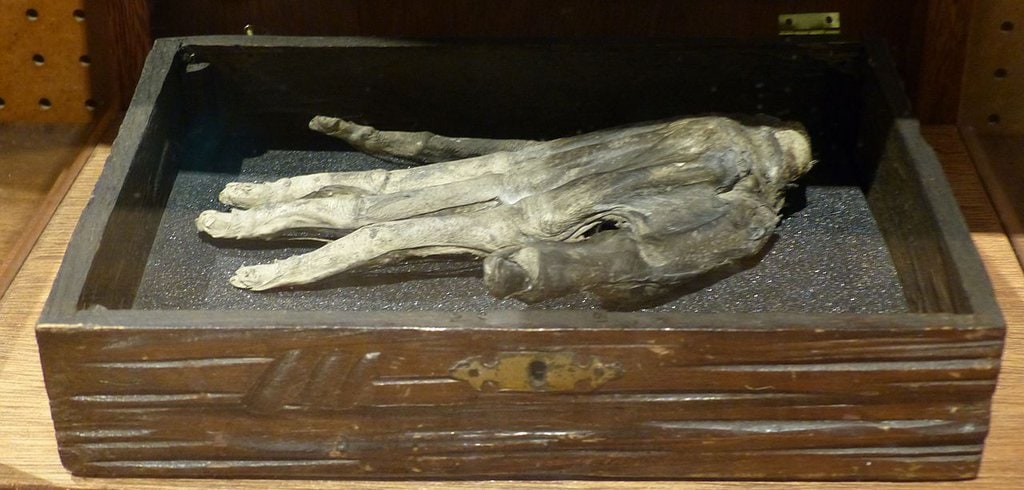
Creating a “Hand of Glory” required the hand of a still-hanging corpse. It was vital that the corpse had been sentenced to hanging. Typically, a murderer’s right hand was taken as it was assumed the dead man would have been right-handed. For the enchantment to work, the hand used must be the one that committed the crime.
The hand would most often be used as a candle itself, though it would sometimes be used as a candle holder. In stories where the fingertips acted as the candle, each finger would represent each person in the home who was asleep. If a finger wouldn’t catch fire, it indicated that either someone in the home was awake or less than five people were in the house. Many thieves misjudged the number of people in the house, which was often their downfall. It is said that the flame of a “Hand of Glory” can only be extinguished with milk. Any other liquid only emboldens its blaze.
Magic powers of the Hand of Glory
Thieves would do anything to reduce the risk of being caught. At this time, burglary was punishable by death. The stakes were high. Accounts differ from source to source on what the “Hand of Glory” could do.
The magic powers bestowed fall into four main theories.
- The first and most common is that the hand would put anyone awake in the house to sleep and render them in a coma-like state until the flames were extinguished.
- Second, the hand would give light to only the holder, casting all others into darkness – akin to the holder becoming invisible.
- Third, any lock could be opened in and around the vicinity where the hand was lit.
- Finally, it is thought that a Hand of Glory could burn forever without perishing.
How to make a Hand of Glory
Creating a “Hand of Glory” was no mean feat. There were rituals to observe, rules to follow, and a process that made it a skilled endeavour. First, the hand had to be severed from a hanging corpse during a lunar eclipse. Instructions state that this was to be in the dead of night, though whether this was essential to the spell or to avoid being caught is not mentioned.
In 1722, the Petit Albert, a popular magical textbook of the day, captured the public’s imagination. Sinister and esoteric in equal parts, the book was inspired by the writings of Saint Albertus Magnus of Cologne. The popularity of such a text illustrated the bleak interest in the dark arts and the forbidden content of black magic.
Take the right or left hand of a felon who is hanging from a gibbet beside a highway; wrap it in part of a funeral pall, and so wrapped, squeeze it well. Then, put it into an earthenware vessel with zimat, nitre, salt, and long peppers, the whole well powdered. Leave it in this vessel for a fortnight, then take it out and expose it to full sunlight during the dog-days until it becomes quite dry. If the sun is not strong enough, put it in an oven with fern and vervain. Next, make a kind of candle from the fat of a gibbeted felon, virgin wax, sesame oil, and peonies, and use the “Hand of Glory” as a candlestick to hold this candle when lighted. Then those in every place you go with this baneful instrument shall remain motionless.
They were covered in wax if the hand were to be used as a candle. If not, the hand was made ready to be used as a candleholder for a magic candle as above. (The candle could only be put out with milk).
How the Hand of Glory came to reside at Whitby Museum
Once upon a time, an antiquarian from Castleton bought an old cottage in Danby. The cottage had once been owned by a man of disrepute. Although there was no evidence ever brought against the man to warrant his arrest. Dr. J.E. Chalmers made a fascinating discovery one day in his new home. He found the right hand of a dead man hanging over a door lintel. Chalmers, a keen historian, decided to keep the hand in his possession until old age. At one time, he considered burying it in Danby churchyard. Happily, though, he reconsidered and passed it on to a local mason named Joseph Ford before he died. Mr. Ford gifted the Hand of Glory to the Whitby Museum in 1935. The inscription alongside the hand at Whitby Museum reads:
“It must be cut from the body of a criminal on the gibbet; pickled in salt, and the urine of man, woman, dog, horse, and mare; smoked with herbs and hay for a month; hung on an oak tree for three nights running, then laid at a crossroads, then hung on a church door for one night while the maker keeps watch in the porch “and if it be that no fear hath driven you forth from the porch … then the hand be true won, and it be yours.”
The medicine of folklore
In the days when medicine was scarce and hangings were common, it is said that the hand of a drowned or hanged man could be used to heal. Goitre, often caused by iodine deficiency, leads to the growth or swelling of the thyroid gland in the neck. A widespread malady of antiquity due to poor diet and nutrition.
It is said that passing a dead man’s hand over the growth would cure the swelling. This led many afflicted persons to visit the recently deceased to use this remedy. The more enterprising of these sick individuals decided that the hand would be useful to them for the long term. Severed and preserved hands were commonplace in the amateur physician’s toolkit.
Diagnosis of illness was limited in the early ages. It was nearly impossible to offer the correct treatment without a proper understanding of the ailment. Wise women were often entreated by the ill to provide a remedy, even if it bordered on the realms of magic.
Medicinal plants were often used by these wise women to treat the sick. Homoeopathic tinctures have been the mainstay of traditional healing for millennia. However, there were many diseases beyond the wisdom of old magic, hence the use of the preserved hand.
Harry Potter and the Hand of Glory
One such remedy used in old times was the mandrake root. Known in the Harry Potter books for its magical properties, the mandrake root is a highly potent ingredient. The mandrake is used in the Harry Potter series as a restorative for those who have been transfigured or cursed.
The name “Hand of Glory” is thought to come from the French term “main de glorie.” This, in turn, is said to have derived from “mandragore,” the French name for mandrake.
Borgin and Burkes
The magic store, Borgin and Burkes, has a Hand of Glory, which catches the eye of the young Draco Malfoy. He purchases the object and later uses it in his assassination attempt on Albus Dumbledore, among other calamitous treachery.
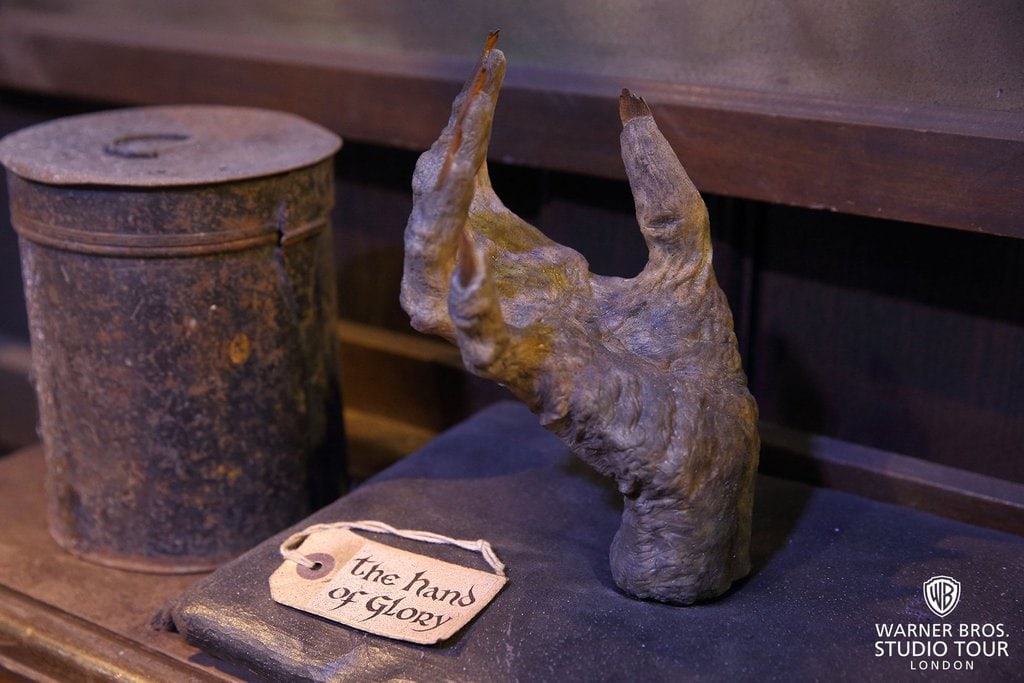
Mandrake plants in early growth have a root that resembles a small baby human. It is said that if a mandrake is dug up from the earth, it will shriek so loudly that the sound kills all who hear it.
Legend has it that mandrakes grew under the gallows from the seed of a hanged man. Lending further credibility to the mystical properties of this fabled plant. As far back as the 15th century, Saxon folklore told of mandrake plants shining a light at night like a lamp.
The name “Hand of Glory” allegedly came into use only during the 17th century.
Code of Hammurabi: The Code of Hammurabi is one of the oldest translated writings in the world. Dated around 1772 BC, these ancient Babylonian laws were set out in ancient Mesopotamia by Hammurabi, the sixth king of Babylonia.
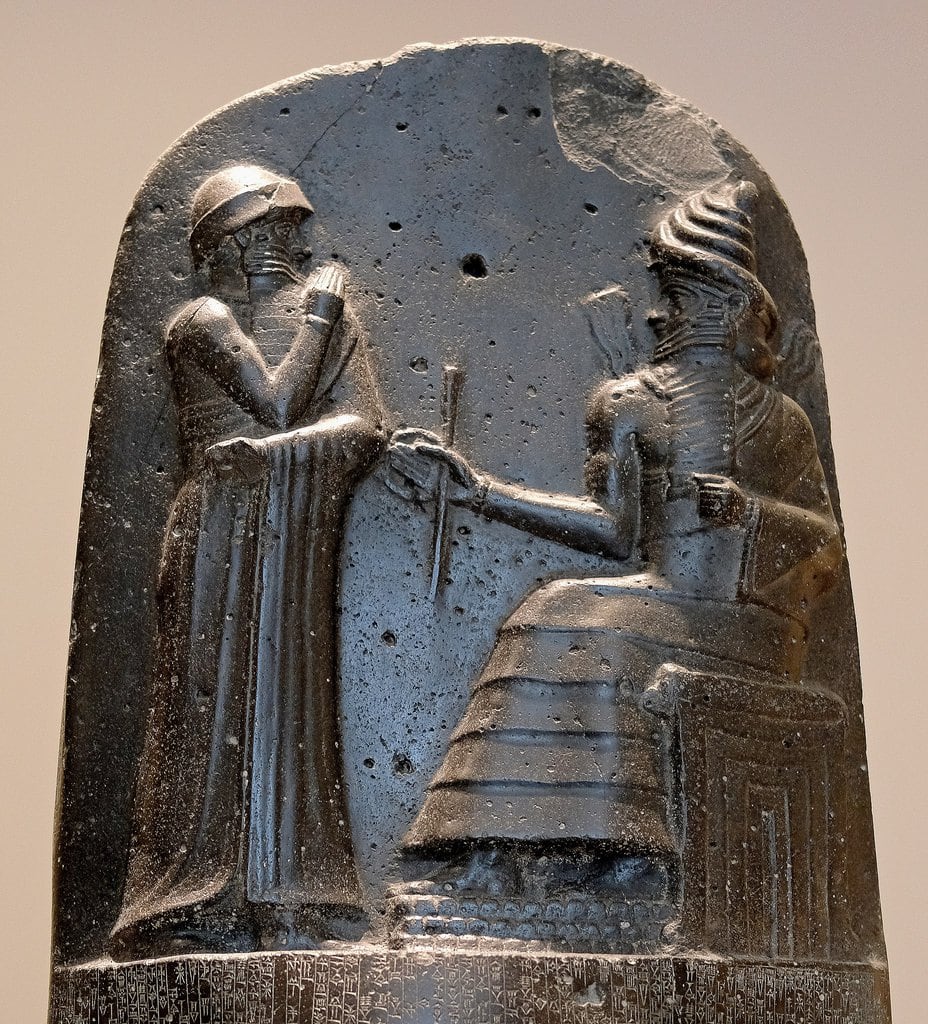
It is from these 282 laws that the principle of “an eye for an eye, a tooth for a tooth” is taken. The Code of Hammurabi states that punishment for a crime should be equal in reciprocity. A murderer must be sentenced to death, and a son striking a father has his hand taken. Fear of similar punishment and shame of the lasting mark is the foundation of this drastic code. It’s from this law that the notion of criminal punishment and amputation has its roots.
Locations of other Hands of Glory
The amputated hands and limbs of criminals were often displayed as a warning to others. To whom the hand belonged was of little importance—the context, however, told the story. There are but a few of these artefacts remaining—the last known “Hand of Glory” resides in Whitby Museum—through the stories of the legend, they live on.
Preserved limbs
Recent findings include the hand of a gambler in the Haunch of Venison public house in Wiltshire. Staff at the pub recount a tale whereby the gambler was caught cheating by the local butcher, who promptly chopped off his hand and threw it into the fireplace. A risky game of whist indeed! The severed hand, found during renovations in 1911, was displayed in a glass case alongside a deck of cards from the 18th century. The hand was stolen in 2010.
St Brigida’s Catholic Church, Westphalia, Germany, was the site of an amputated hand preserved in limestone. The hand was alleged to have been cut off for telling lies. It was displayed to show others the consequences. The local community had fundraised to have the hand identified at Düsseldorf University—sadly, thieves took it in 2012. A preserved limb still hangs in a Prague church, instilling fear even now in the public at large.
